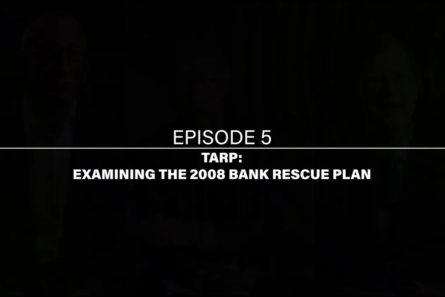Regulation and Red Tape: TARP: Examining the 2008 Bank Rescue Plan

In October of 2008, the United States faced a recession that some experts warned would rival the Great Depression. In an effort to address the nation’s financial panic, Congress passed the Troubled Asset Relief Program (TARP) with the intention of stabilizing the financial system. The federal government hoped that by providing billions of dollars in capital to the largest US banks, consumers would trust the banks and prevent further financial crises. The success of TARP is still debated today by experts on both sides of the issue. Did TARP save the economy, or was it an excessive government intervention?
In the final episode of the “Regulation and Red Tape” series, experts address this question and more as they weigh the government response and the lasting impact of TARP on the financial industry.

Speakers
Former BB&T Executive
Host
Topics
Enforcement & Agency Coercion
Financial Services & Corporate Governance
Regulatory Process
The Federalist Society and Regulatory Transparency Project take no position on particular legal or public policy matters. All expressions of opinion are those of the speaker(s). To join the debate, please email us at [email protected].








